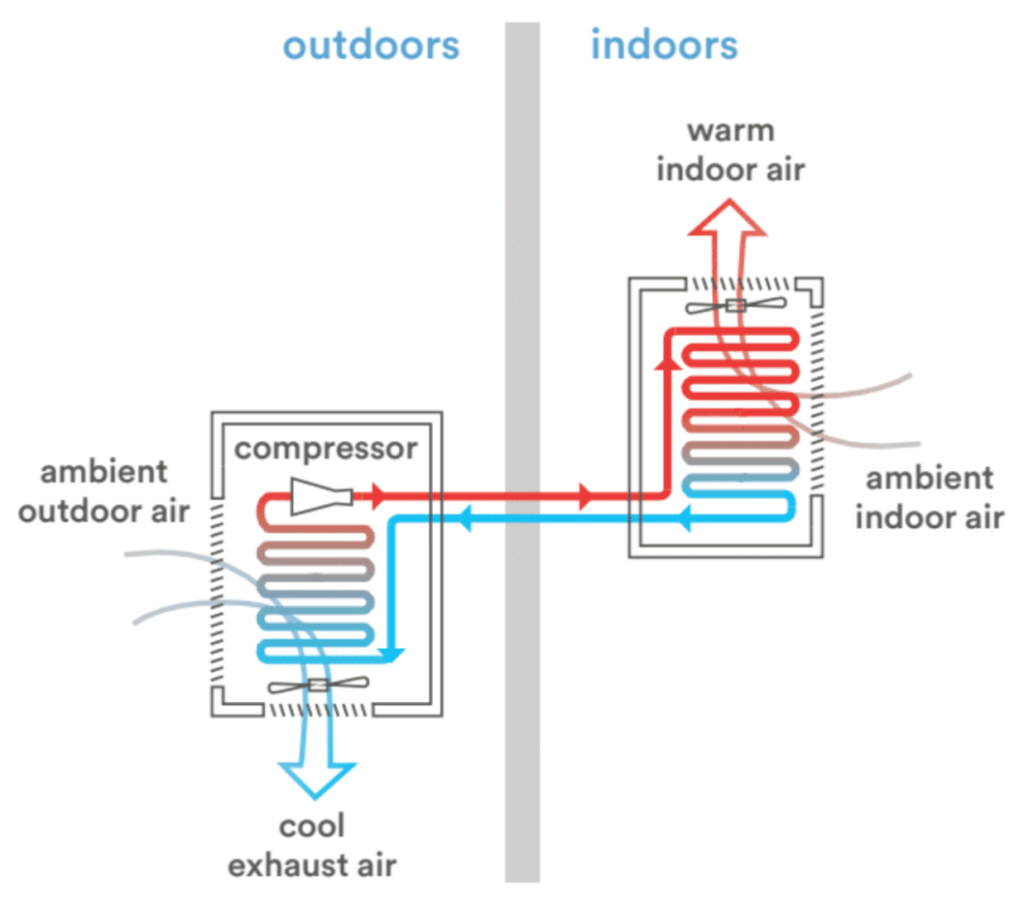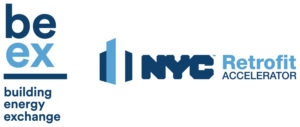Mini-Split Systems
Highly efficient heat pumps for decentralized, electric-powered heating and cooling in multifamily buildings.
Applicable Buildings Types
All multifamily; hotels
When to Implement
At time of equipment replacement
*Be sure to consult a qualified service provider to determine the right measures for your building.
What is a Mini-Split?
Mini-split systems are an air-source heat pump (ASHP) technology that can be used to heat and cool spaces. ASHPs care high-efficiency electric appliances that add or remove heat from an indoor space as needed. Mini-split systems save energy and reduce greenhouse gas emissions while greatly improving resident comfort, offering multifamily buildings a path to electrification.

Fig 1. In heating mode, mini-splits transfer heat from outside to inside via refrigerant lines. Heat from air drawn through the outdoor unit is transferred to a refrigerant, which is pumped through a compressor to the indoor unit. Heat from the refrigerant is then transferred to ambient indoor air to produce warm air. In cooling mode, mini-splits operate in reverse, moving heat from inside to outside.
How to Implement
Due to the high cost of replacing heating and cooling systems, the best time to consider this upgrade is during major renovations or at the time of equipment replacement. Download the full tech primer to learn more about each of the following steps:
A. Plan for the placement of the mini-split system’s refrigerant lines through exterior walls to outdoor units
B. Determine Unit Location for outdoor and indoor units to avoid creating hot and cold spots in the room
C. Install mini-split systems with the help of qualified contractors to avoid refrigerant leaks and an under-performing system due to poor installation
Cost and Benefits
Cost and benefits of a mini-split system retrofit will vary depending on your building’s baseline systems and conditions. Typically, buildings can expect to see the following results:
Greenhouse Gas (GHG) Savings
Converting a multifamily building to a mini-split system can greatly reduce heating and cooling related GHG emissions.
Tenant Experience Improvement
Mini-split systems greatly improve tenant satisfaction by delivering quiet, uniform heating and cooling that can be adjusted to personal comfort preferences.
Utility Savings
Although mini-split systems consume significantly less energy than systems that use natural gas, fuel oil, or district steam, utility costs for operating a mini-split system can be high due to the current cost of electricity.
Capital Cost
The capital cost for a mini-split system conversions are high due to the number of units required to fulfill individual space temperature preferences. Cost savings possibilities are available.
Maintenance Requirement
A properly installed mini-split system requires a moderate level of maintenance involving periodically cleaning air filters and monitoring refrigerant leaks.
Take Action
This information is part of more than a dozen High Performance Technology Primers prepared by the Building Energy Exchange and the Retrofit Accelerator to introduce decision-makers to solutions that can help them save energy and improve comfort in their buildings. Curious about other retrofitting possibilities? Explore our complete library of Tech Primers here.
The NYC Retrofit Accelerator’s team of Efficiency Advisors offers free, personalized advisory services to help streamline the process of making energy efficient improvements to your buildings.

Get in touch with the NYC Retrofit Accelerator today!
Call (212) 656-9202
Visit nyc.gov/RetrofitAccelerator